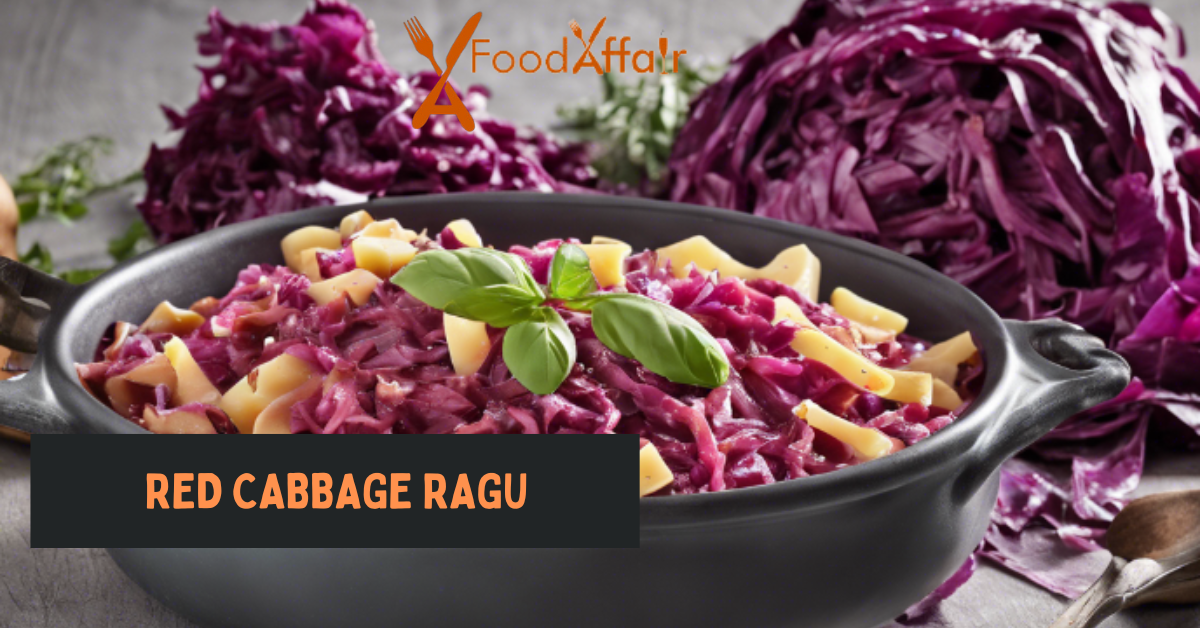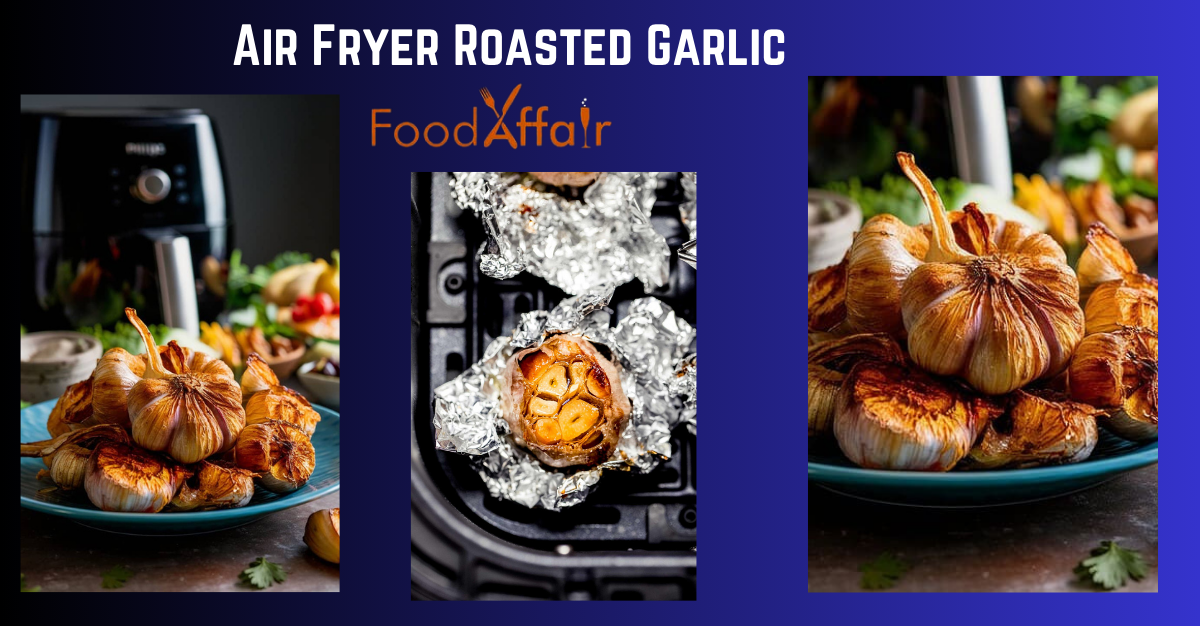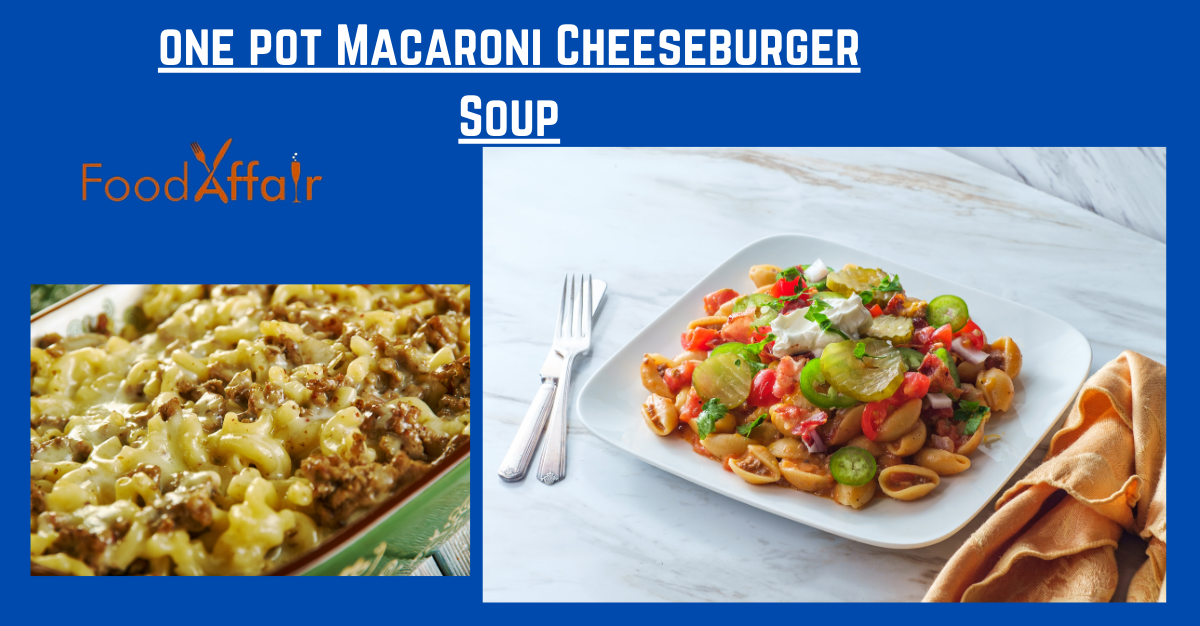RED CABBAGE RAGU is a popular vegetable with a rich, healthful, and bright flavor that can be added to many kinds of recipes, especially pasta sauces. Red Cabbage Ragù is a new take on regular pasta sauces that showcases its ability to be used in vegetarian and vegan dishes. The recipe contains essential ingredients like olive oil, cinnamon, and tomato paste, which improve the flavor and scent.
The procedure for preparing it is described inside this article, including instructions for heating the ragù to get the right consistency and taste quality. Serving choices are also included, including ways to enjoy this vegan meal with pasta. This culinary adventure teaches readers how easy it is to add red cabbage to their cooking collection, improving it with spices like olive oil and cinnamon powder.
Ingredients for RED CABBAGE RAGU
Red Cabbage Ragù Recipe
• Essential vegetables: 1/2 red cabbage, onion, and garlic.
• Spices: 1 teaspoon paprika, 1/2 teaspoon cinnamon, 1 teaspoon oregano.
• Ingredients: Ensures melding of ingredients.
Liquids and Oils Used
The cooking process begins with 2 tablespoons of olive oil, which is used to sauté the onions and garlic, providing a rich base for the ragù. The liquids added to create the sauce include 180 ml of red wine and 500 ml of vegetable stock, which help to deglaze the pan and simmer the cabbage, respectively, allowing the flavors to concentrate and deepen. Additionally, 2 tablespoons of soy sauce are incorporated for umami richness, complemented by 1 tablespoon of tomato paste to intensify the tomato flavor.
Optional Add-Ins
Red cabbage ragù’s basic recipe is flavorful enough on its own, but you may alter the flavor profile to suit your tastes with extra add-ins. To provide a creamy texture and a touch of nutty flavor, cashew cream or butter is one possibility.
Adding coconut sugar to the veggies to bring out their inherent sweetness is another alternative. If you want to be even more creative, you may add finely chopped fresh herbs, such as thyme or rosemary, towards the end of cooking to give it a fragrant and fresh touch.
Preparing the red cabbage
Red Cabbage Cooking Techniques
• Cut base in half.
• Remove thick core by V-shaped cut.
• Slice cabbage into semi-fine ribbons for uniform cooking.
• This technique extracts maximum flavor and ensures good cooking with other ingredients.
Pre-cooking Methods
Ragù Recipe:
• Heat olive oil in a pan with adequate sides.
• Add onion and garlic, sautéing for 2-3 minutes.
• Add cabbage and season with salt, pepper, dried oregano, and cinnamon.
• Cook on medium-low flame for 30-40 minutes, stirring occasionally.
• Add water if needed to prevent sticking.
• This method softens cabbage and absorbs spices and aromatics.
Cooking the RED CABBAGE RAGU
Sauteing Aromatics and Spices
Heat the pan first, then add the onion and garlic and fry until the onion is transparent. This gives the ragù a tasty foundation. Add the spices (paprika, oregano, and cinnamon) and a small amount of flour after that. This will ensure that the components are properly coated and spread equally throughout the onion mixture, ready for the red cabbage to be added.
Adding liquids and simmering
Once the spices are sautéed, add the finely sliced red cabbage to the pan. Cook it briefly before pouring in the soy sauce, red wine, and tomato paste. Increase the heat to high, allowing the red wine to reduce until it barely coats the bottom of the pan.
This reduction is crucial as it concentrates the flavors. Following this, add chopped tomatoes and vegetable stock, then bring the mixture to a boil. Reduce the heat and let it simmer for about 30 minutes. During this period, the cabbage should soften, and the sauce will thicken, enhancing the overall texture and flavor of the ragù.
Final adjustments and cooking time
To finish, adjust the seasoning with salt and pepper to taste and add any final spices or herbs, like a sprinkle of fresh rosemary or thyme for a burst of freshness. Continue to simmer the ragù on low heat for an additional 15 minutes. This extra time allows all the flavors to meld together, resulting in a rich, complex sauce. The final dish should be thick, caramelized, and ready to serve with your preferred pasta or as a standalone dish.
Serving Suggestions
Best Pasta Pairings
For a truly delightful meal, pairing the red cabbage ragù with the right type of pasta can enhance both the flavor and texture of the dish. A recommended pairing is paccheri, a large tube-shaped pasta that perfectly encapsulates the thick, rich sauce, allowing each bite to be as flavorful as possible. This pasta choice not only complements the texture of the ragù but also adheres to the traditional Italian culinary style, making each serving a hearty and satisfying experience.
Alternative Serving Ideas
While traditionally served with pasta, the versatility of red cabbage ragù allows it to be a splendid addition to other dishes. For those who prefer a low-carb option or simply a different taste profile, serving the ragù over steamed vegetables or using it as a topping for baked potatoes can be equally satisfying. Additionally, the ragù can be a flavorful accompaniment to proteins such as grilled steak or scrambled eggs, offering a robust flavor that enhances the main dish.
Side Dishes to Complement the Ragù
To balance the rich and savory notes of the Red Cabbage Ragù, consider serving it with lighter side dishes. A fresh green salad dressed with a vinaigrette can add a crisp, refreshing contrast, while steamed green beans or roasted Brussels sprouts provide a healthy and flavorful complement. For those who enjoy a more traditional pairing, a side of mashed potatoes works wonderfully, especially when the potatoes are topped with a bit of the Ragù sauce for extra flavor.
Conclusion
This article explores how to make a special red cabbage ragù while showcasing the ability to adapt and health advantages of red cabbage. Red cabbage is prepared by slicing, precooking, and then boiling it until it becomes a colorful and tasty meal.
This recipe, which also includes vegetarian and vegan choices, shows how red cabbage may be used to improve on classic pasta meals. With a wealth of flavor and nutritional value, the recipe allows visitors to produce a dish that tantalizes the taste senses and enhances the eating experience. It also stimulates exploration and creative thinking in the kitchen.
FAQs
1. What are some of the best ways to prepare red cabbage?
Red cabbage is a vegetable that can be enjoyed in many ways, like braising and pickling. It has vitamins A and K, minerals, and antioxidants when eaten raw or in juice.
2. Is the cooking method for red cabbage the same as that for green cabbage?
Red and green cabbages are commonly used interchangeably in recipes, but when cooking red cabbage, it’s important to consider the water-soluble anthocyanins, which can turn blue when cooked. You can prevent this by adding an acidic substance.
3. What occurs when red cabbage is boiled?
Boiling red cabbage in water can turn it blue, but to maintain its vibrant red-purple hue, add acidic ingredients like vinegar or lemon juice. These acids preserve the color and enhance the cabbage’s natural earthiness, complementing its flavor.
4. Which meat pairs well with red cabbage?
Red cabbage pairs well with many meats like pork, bacon, ham, and sausage, and classically with apples for a sweet contrast. It also pairs well with onions for sweetness and a slight sharpness.
References CREDIT
https://www.lowlyfood.com/recipe/the-best-red-cabbage-ragu/
https://justinecooksvegan.com/red-cabbage-ragu/
https://www.youtube.com/watch?v=zAnPS5TDB58
https://www.quora.com


![Is BIG MAC GROUND TURKEY SLIDERS Worth [$] To You? Big Mac Ground Turkey Sliders](https://i0.wp.com/foodaffair.com.ng/wp-content/uploads/2024/09/Quick-and-Healthy-Meal-28.png?resize=600%2C400&ssl=1)












